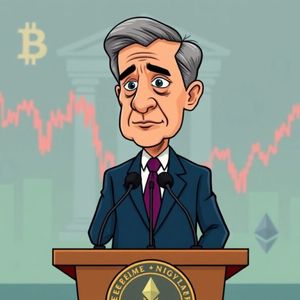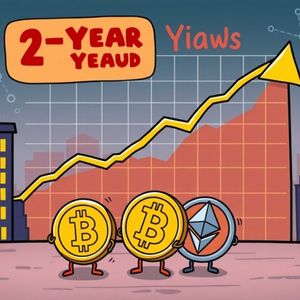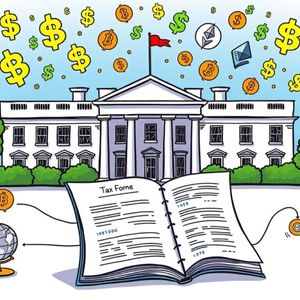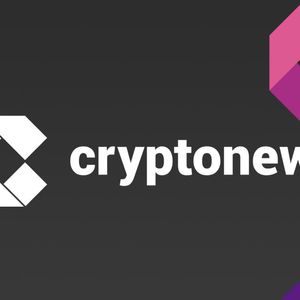BitcoinWorld Fed Rate Cut: Why Scott Bessent’s Stance Sends Ripples Through Crypto Markets In the fast-paced world of cryptocurrency, every whisper from a key economic figure can send immediate tremors through the market. This holds especially true when the U.S. Treasury Secretary, Scott Bessent, weighs in on the highly anticipated Fed rate cut . His recent statement, indicating he doesn’t expect a rate cut today, as reported by the well-regarded Walter Bloomberg economic news account on X, has naturally sparked considerable discussion and speculation among investors and enthusiasts alike. For those navigating the volatile crypto seas, understanding the nuances of such pronouncements is paramount, as they often hint at the broader macroeconomic currents shaping investment decisions globally. Why Does a Fed Rate Cut Matter to Crypto? The Federal Reserve, often referred to simply as “the Fed,” plays a pivotal role in shaping the global economic landscape through its monetary policy decisions. Their primary tool? Interest rates. When the Fed decides on a Fed rate cut , it typically signals a move to stimulate economic activity. Lower interest rates make borrowing cheaper for consumers and businesses, encouraging spending, investment, and ultimately, economic growth. This easing of monetary policy has profound implications for various asset classes, including the dynamic cryptocurrency market. The relationship between traditional interest rates and the nascent digital asset space is complex but generally follows a clear pattern: Risk-On Sentiment: Lower interest rates diminish the attractiveness of traditional, lower-risk investments like savings accounts and government bonds. This often pushes investors to seek higher returns in riskier assets. Cryptocurrencies, with their inherent volatility and potential for significant gains, often benefit from this “risk-on” environment. Capital flows out of traditional safe havens and into more speculative ventures, fueling demand for digital assets. Reduced Dollar Strength: A potential side effect of lower rates, particularly if the Fed cuts more aggressively than other central banks, can be a weaker U.S. dollar. Since many cryptocurrencies are priced against the dollar, a weaker dollar can make them appear cheaper and more appealing to international investors holding other currencies, thereby increasing demand. Inflation Hedging Narrative: Prolonged periods of low interest rates can sometimes fuel concerns about inflation, as more money circulates in the economy. A significant portion of the crypto community views assets like Bitcoin as a potential hedge against inflation, often referred to as “digital gold.” In this narrative, a scenario where the Fed avoids a Fed rate cut due to persistent inflation concerns could ironically strengthen this very narrative, albeit with a different immediate price impact. Cost of Capital for Innovation: For the burgeoning crypto industry, higher interest rates mean a higher cost of capital for startups, developers, and blockchain projects seeking funding. This can slow down innovation and expansion, whereas a Fed rate cut would make financing more accessible, potentially accelerating growth within the ecosystem. Conversely, when rates are held steady or increased, it can create a “risk-off” environment, pushing investors towards safer assets and away from more volatile ones like crypto. This is precisely why Scott Bessent’s comments about no immediate Fed rate cut are so closely watched by market participants worldwide. Scott Bessent’s Insights: What His Stance Implies for the Fed Rate Cut Scott Bessent, a seasoned investor with a distinguished career that includes serving as the Chief Investment Officer for George Soros’s family office, brings a wealth of experience and a unique perspective to his role as U.S. Treasury Secretary. His insights are not merely speculative; they often reflect a deep understanding of current economic indicators, government fiscal policy, and the broader financial market sentiment. When Bessent publicly states he doesn’t expect a Fed rate cut , it carries significant weight because he is privy to high-level economic discussions and data that are not always immediately available to the public. His position allows him to offer a perspective that complements, and sometimes even foreshadows, the Federal Reserve’s official pronouncements. His statement suggests that, from his vantage point within the Treasury, the economic conditions necessary for the Fed to ease its monetary policy are not yet fully met. This could imply that inflation remains stickier than desired, or that the labor market is still robust enough to withstand current interest rate levels without significant economic distress. The Treasury Secretary’s comments, while not directly setting monetary policy, certainly inform market expectations and can influence investor behavior. For crypto investors, this means the prevailing economic winds might continue to favor a more cautious approach, at least in the short term, rather than an immediate bullish surge fueled by cheaper money. It signals a potential alignment between fiscal and monetary policy in maintaining a tight stance until clear evidence of sustained disinflation emerges. The Broader Economic Picture: Why No Immediate Fed Rate Cut? The Federal Reserve’s decisions are meticulously data-dependent, focusing on its dual mandate of maximizing employment and maintaining price stability (controlling inflation). Several key economic indicators influence whether the Fed considers a Fed rate cut . Understanding these metrics is crucial for anticipating future monetary policy moves: Inflation Data: The Consumer Price Index (CPI) and Personal Consumption Expenditures (PCE) are paramount. The Fed’s preferred inflation gauge is the PCE price index, particularly the “core” PCE which excludes volatile food and energy prices. If these metrics remain elevated above the Fed’s 2% target, even if trending downwards, it’s less likely they will cut rates. Recent data has shown inflation proving more persistent than anticipated, especially in the services sector. Employment Figures: A strong labor market, characterized by low unemployment rates, steady job growth (as seen in Non-Farm Payrolls), and rising wages, gives the Fed more leeway to keep rates higher without fearing a significant economic downturn. A tight labor market can contribute to inflationary pressures through wage growth. GDP Growth: Robust Gross Domestic Product (GDP) growth suggests the economy can comfortably handle current interest rate levels. If the economy is expanding strongly, there’s less urgency for the Fed to cut rates to stimulate activity. Manufacturing and Services PMIs: Purchasing Managers’ Indexes (PMIs) for both manufacturing and services sectors provide a forward-looking view of economic activity. Strong readings indicate economic expansion, reducing the need for a Fed rate cut . Global Economic Conditions: International economic stability, geopolitical events, and the performance of major trading partners can also play a role in the Fed’s calculus, as these factors can impact U.S. economic outlook and inflation. Bessent’s comments align with a general sentiment among many economists that while inflation has come down from its peaks, it has proven more persistent than initially anticipated. This “higher for longer” narrative regarding interest rates is a significant factor shaping investment strategies across all asset classes, including digital assets. A sustained period without a Fed rate cut means that the cost of capital remains elevated, impacting everything from corporate earnings to individual purchasing power. It forces a recalibration of risk premiums and valuations, especially for growth assets like technology stocks and cryptocurrencies that rely on future earnings potential. Navigating the Waters: Impact of No Fed Rate Cut on Crypto and Investor Sentiment The immediate reaction to news of no Fed rate cut can vary in the cryptocurrency market. While Bitcoin and Ethereum often react with initial volatility, the broader impact is usually more nuanced and extends beyond mere price fluctuations. Here’s what crypto investors might observe and how different segments of the market could be affected: Aspect Potential Impact of No Rate Cut Bitcoin (BTC) May experience sideways trading or slight downward pressure as risk-off sentiment prevails. Institutional investors, who have recently become a significant force via spot ETFs, might hold back on large allocations until there’s more clarity on monetary policy easing. However, Bitcoin’s halving narrative and its fixed supply could provide some underlying support. Ethereum (ETH) Similar to Bitcoin, ETH could see reduced speculative interest. Yet, Ethereum’s robust ecosystem, ongoing developments (like the Dencun upgrade and future scalability improvements), and the appeal of staking yields (which offer a form of passive income) might provide some resilience against macro headwinds. Its utility in DeFi and NFTs could also buffer some of the negative sentiment. Altcoins (Smaller Cap Cryptocurrencies) Often more susceptible to market sentiment shifts due to their lower liquidity and higher beta to BTC/ETH. Higher volatility and potentially larger price swings are common, especially for smaller cap projects that rely heavily on speculative capital. Investors might become more discerning, focusing on projects with strong tokenomics and clear roadmaps. Stablecoins Their role as safe havens within the crypto ecosystem could be reinforced during periods of uncertainty. Demand for yield-generating opportunities on stablecoins, often found in DeFi protocols, might remain strong as investors seek to preserve capital while still earning returns. They serve as crucial liquidity bridges during market downturns. Decentralized Finance (DeFi) Lending/Borrowing Higher traditional interest rates can make DeFi yields less comparatively attractive, though this depends on specific protocol mechanics and the inherent risks. However, the core utility of DeFi for permissionless financial services remains, and innovation continues regardless of macro conditions. Institutional Adoption Large institutions often prefer clear macroeconomic signals. A prolonged period of uncertainty regarding the Fed rate cut timeline might lead some to delay significant crypto allocations, opting for a wait-and-see approach. Conversely, those with a long-term view might see this as an opportunity to accumulate at potentially lower prices. Investor sentiment is a critical driver in crypto. When there’s uncertainty or a clear signal that easy money policies aren’t coming soon, it can dampen enthusiasm and lead to reduced trading volumes. However, seasoned crypto investors often look beyond short-term Fed announcements, focusing on long-term adoption trends, technological advancements, and the inherent value propositions of blockchain technology. The absence of an immediate Fed rate cut might simply mean a period of consolidation for the market, allowing fundamentals to catch up and weaker projects to be flushed out, ultimately strengthening the ecosystem. What’s Next? Preparing for Future Fed Rate Cut Decisions While Scott Bessent’s comments provide a snapshot of current expectations, the economic landscape is dynamic and ever-evolving. The Fed’s stance on a Fed rate cut can shift rapidly based on incoming data, geopolitical developments, and the nuanced interpretations of its governors. Here are some actionable insights for crypto investors to prepare for and navigate future monetary policy shifts: Stay Informed and Data-Driven: Regularly monitor official Fed announcements, including the statements from the Federal Open Market Committee (FOMC) meetings, press conferences by the Fed Chair, and the “dot plot” projections which indicate individual Fed members’ expectations for future interest rates. Pay close attention to key economic reports such as the Consumer Price Index (CPI), Personal Consumption Expenditures (PCE), employment data (Non-Farm Payrolls, unemployment rate), and GDP growth figures. These are the primary drivers of future rate decisions. Diversify Your Portfolio Wisely: Don’t put all your eggs in one basket. A diversified crypto portfolio, potentially including a mix of large-cap assets like Bitcoin and Ethereum, stablecoins for capital preservation, and carefully selected altcoins with strong fundamentals, can help mitigate volatility during uncertain times. Consider allocating a portion to yield-generating strategies if comfortable with the associated risks. Focus on Fundamentals and Long-Term Vision: In times of macroeconomic uncertainty, speculative plays become riskier. Instead, prioritize projects with strong fundamentals, clear use cases, robust technology, active development teams, and sustainable tokenomics. Long-term adoption trends and the continued build-out of Web3 infrastructure often outweigh short-term macro fluctuations. Employ Dollar-Cost Averaging (DCA): This time-tested strategy involves investing a fixed amount of money at regular intervals, regardless of the asset’s price. DCA can smooth out market volatility, reduce the emotional impact of price swings, and prevent the need to “time the market,” which is notoriously difficult. Understand Global Context: While the U.S. Fed is dominant, other major central banks (ECB, BoE, BoJ) also influence global liquidity. Pay attention to their monetary policies, as synchronized or divergent actions can amplify or dampen the effects of the Fed’s decisions on global markets, including crypto. The path forward for a Fed rate cut is not set in stone; it’s a dynamic process influenced by evolving economic conditions. Bessent’s early warning serves as a crucial reminder that patience, strategic planning, and continuous learning are key in navigating the complex and interconnected worlds of traditional finance and the rapidly evolving crypto ecosystem. Staying agile and informed will be your greatest assets. Summary: What Does No Immediate Fed Rate Cut Mean for You? Scott Bessent’s statement that he doesn’t anticipate an immediate Fed rate cut today underscores a cautious economic outlook from a key U.S. financial figure. This perspective, rooted in current economic data and the ongoing fight against inflation, suggests that the era of readily available cheap money may not be returning as quickly as some investors hoped. For the cryptocurrency market, this means a continued environment where risk assets face headwinds from higher borrowing costs and a potentially stronger dollar. However, it also highlights a period where fundamental strength, technological innovation, and long-term vision become even more critical. While the immediate ripple effect might be felt in market sentiment, savvy investors will use this period to refine their strategies, focusing on resilience, informed decision-making, and the inherent value propositions of the digital asset space. The future of the Fed rate cut remains a key watchpoint for all market participants. Frequently Asked Questions (FAQs) Q1: What is a Fed rate cut and why is it important? A Fed rate cut is when the U.S. Federal Reserve lowers its benchmark interest rate (the federal funds rate). This is done to stimulate economic growth by making borrowing cheaper, encouraging spending and investment. It’s important because it influences interest rates across the economy, affecting everything from mortgages to business loans, and impacts investor sentiment across all asset classes, including crypto. Q2: Why are Scott Bessent’s comments significant regarding a Fed rate cut? Scott Bessent is the U.S. Treasury Secretary, a high-ranking economic official. His comments are significant because he has access to high-level economic data and discussions, offering an informed perspective that can influence market expectations and investor behavior, even though he does not directly set monetary policy. Q3: How does the absence of a Fed rate cut impact the crypto market? When there’s no Fed rate cut, it typically means interest rates remain higher, fostering a “risk-off” environment. This can reduce investor appetite for volatile assets like cryptocurrencies, potentially leading to sideways trading or downward pressure. It also means a higher cost of capital for crypto projects and a potentially stronger U.S. dollar, which can make dollar-denominated crypto assets less attractive to international buyers. Q4: What economic indicators does the Fed consider for a rate cut? The Fed primarily considers inflation data (like CPI and PCE), employment figures (unemployment rate, job growth), and GDP growth. If inflation remains above their 2% target or the labor market is robust, they are less likely to cut rates. Q5: What strategies can crypto investors use in an environment without immediate Fed rate cuts? In such an environment, investors can focus on diversifying their portfolios, employing dollar-cost averaging (DCA), prioritizing projects with strong fundamentals and clear use cases, staying informed about economic data, and considering yield-generating opportunities with stablecoins or staking. Q6: When might the next Fed rate cut occur? The timing of the next Fed rate cut is data-dependent and not fixed. It will rely on future inflation reports, employment data, and overall economic performance. Investors should monitor upcoming Federal Open Market Committee (FOMC) meetings and the Fed’s “dot plot” projections for updated guidance. Did you find this analysis helpful? Share this article with your friends and fellow investors on social media to help them understand the profound implications of Fed decisions on the crypto market! To learn more about the latest crypto market trends, explore our article on key developments shaping Bitcoin price action . This post Fed Rate Cut: Why Scott Bessent’s Stance Sends Ripples Through Crypto Markets first appeared on BitcoinWorld and is written by Editorial Team















